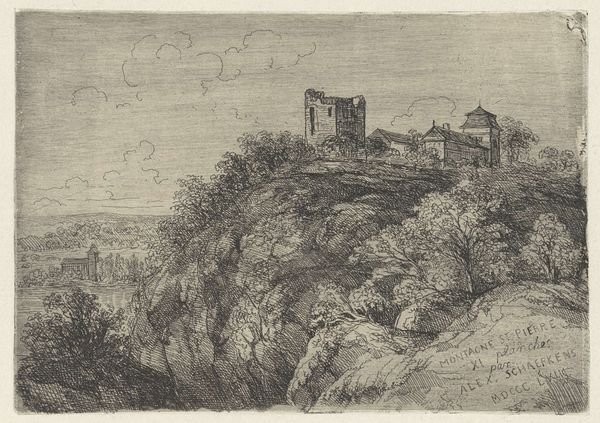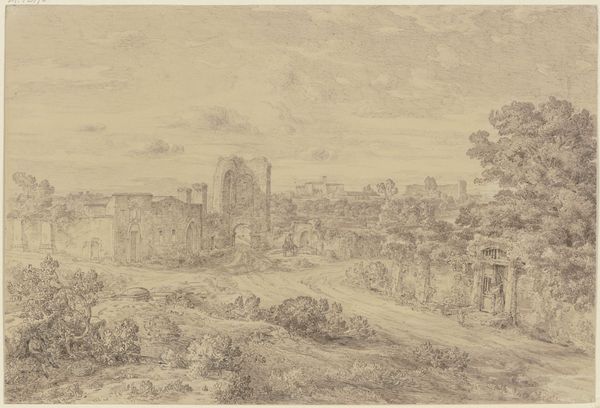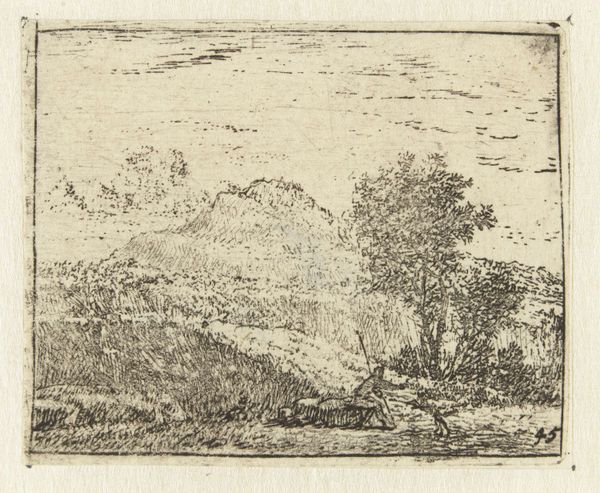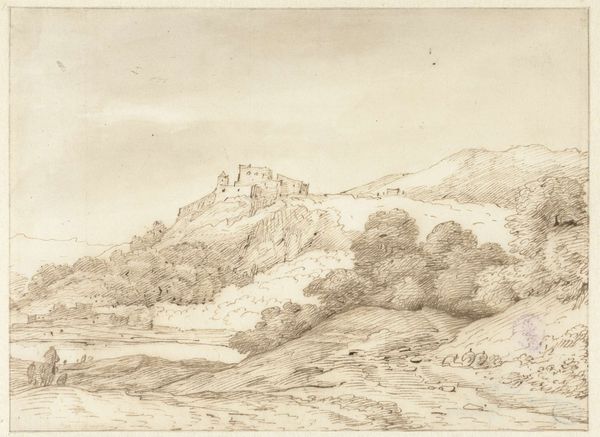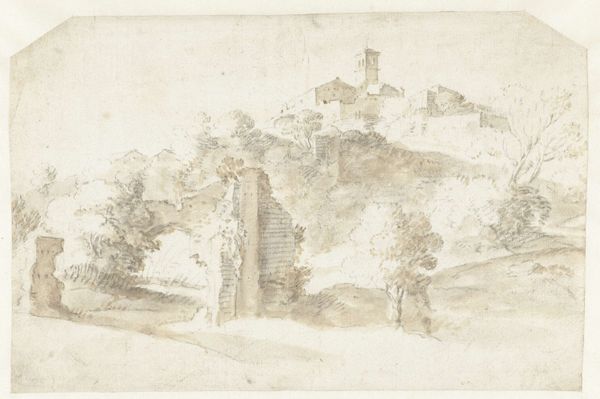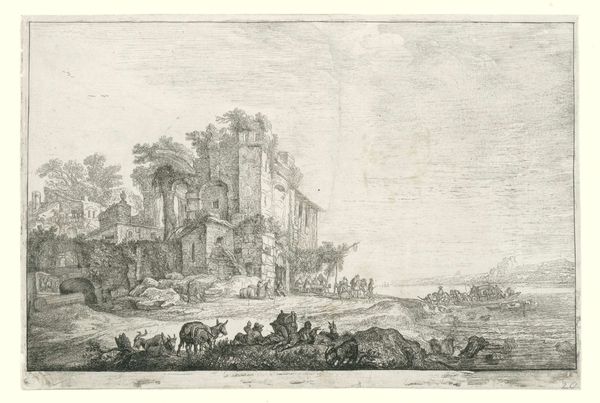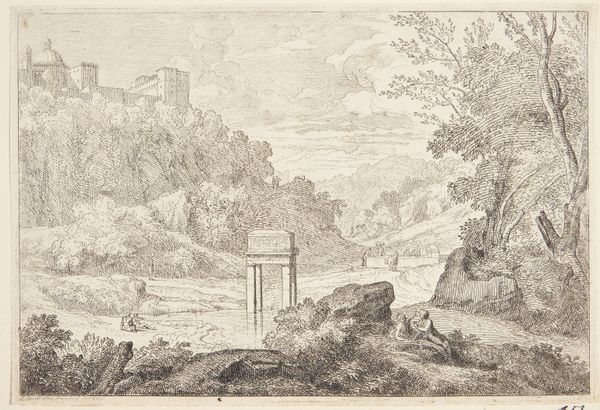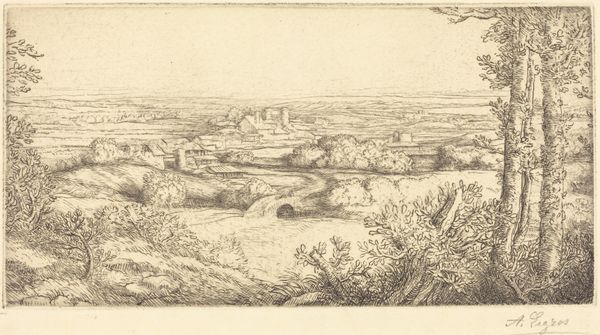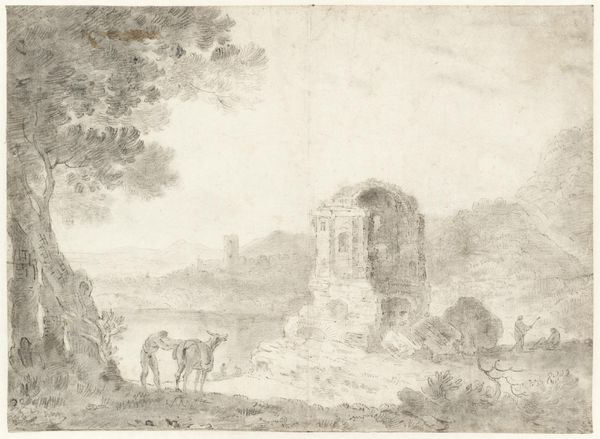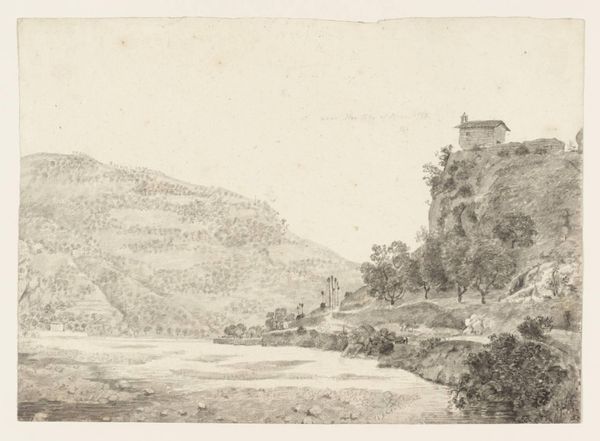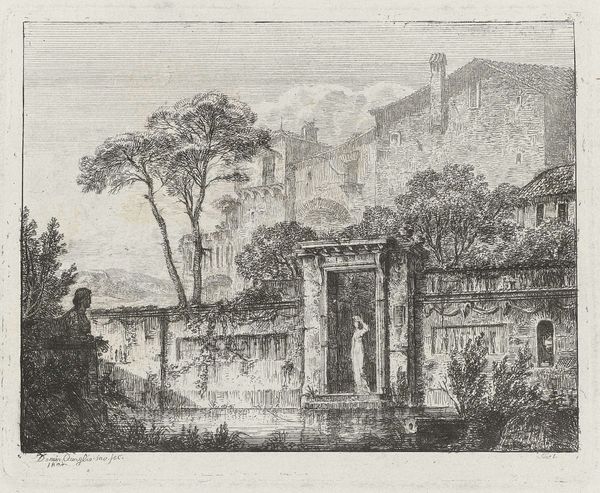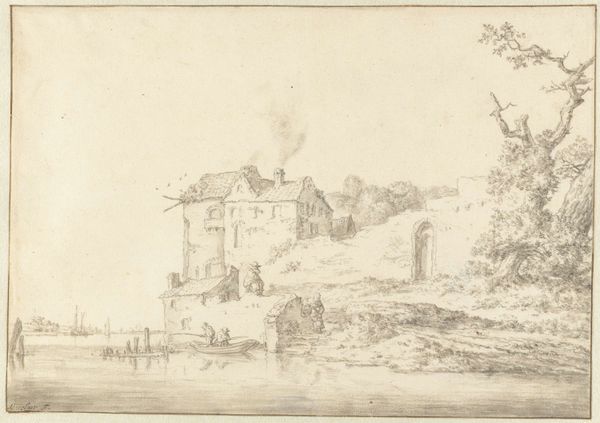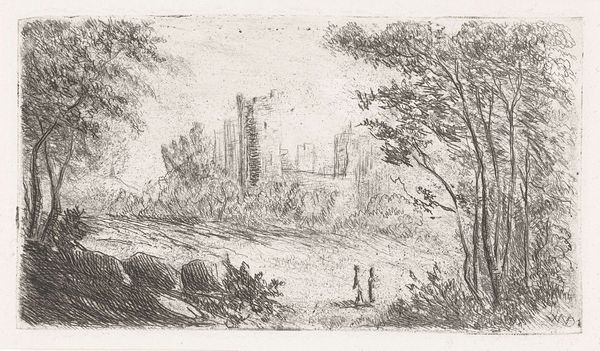
Dimensions: support: 322 x 447 mm
Copyright: CC-BY-NC-ND 4.0 DEED, Photo: Tate
Curator: Richard Wilson’s drawing, "Ariccia," captures a town nestled amongst verdant hills. It’s held here in the Tate Collections. Editor: It’s strikingly quiet, almost hushed. The monochrome palette really enhances that sense of stillness. Curator: Wilson employed delicate strokes to construct the scene, focusing on the interplay between the architectural forms and the embracing landscape. Editor: The way the dome pushes through the rooftops is fantastic! There is a geometric dialogue going on that I find very satisfying. Curator: It feels like he wasn’t just documenting a place, but also trying to capture the essence of its atmosphere, you know? Editor: Absolutely. This study of light and shadow also has the potential to trigger our memories of Italy, and a sense of nostalgia for grand architectural settings. Curator: I'll definitely carry an echo of those domes and hills away with me today. Editor: Me too. It’s a really lovely, calming thing to encounter.
Comments
Join the conversation
Join millions of artists and users on Artera today and experience the ultimate creative platform.
tate 6 months ago
⋮
The Welsh artist Richard Wilson was one of the most important landscape painters working in Britain in the second half of the eighteenth century. The majority of his drawings are in chalks, pen and ink or pencil. His pupil, Thomas Jones (no.44), reported that Wilson 'did not approve of tinted Drawings' (that is watercolours) which he felt 'hurt the Eye for fine Colouring'. Ariccia is situated south-east of Rome in the Alban Hills. Wilson shows the famous view looking towards the Palazzo Chigi and Bernini's church of Santa Maria dell'Assunzione. He has used a stump (a tightly rolled paper or leather cylinder with rounded points) to soften and smudge some of the black chalk, thus creating rich areas of tone. Gallery label, September 2004
